October 19, 2014 – Seagoville, Texas
I recently accepted an invitation to spend a few evening hours with friends out at the John Bunker Sands Wetland Center in Seagoville, Texas. This time of year, Barn Swallows by the thousands will marshal over the wetland cells to feed before going to roost for the night. If the weather conditions and lighting are just right, it can really be a spectacular show.
This was also going to be the first opportunity for me to have a look at the new steel tower installed on the property specifically for the resident Bald Eagles to nest on. For those who are not familiar with the story, this pair of eagles has nested here at John Bunker Sands for the past two years, and over this time they have successfully fledged four juvenile eagles. That’s four new resident eagles introduced into our area—an important development by any measure.
I have documented the nesting activities at this site on a weekly basis over the past two years. You can read those accounts starting here (2012): Bald Eagle – Nest Tower, and here (2013): Bald Eagle – They’re Back!
Unfortunately, the eagles had chosen to nest on a transmission tower carrying high voltage lines into southeast Dallas. The power company became concerned for the safety of both the eagles and its power lines, and decided to intervene. A plan was developed to move the nest from the existing tower to the new tower which would be dedicated solely to the eagles and their nesting activities. The video below documents the much of the process:
The new tower sits up high on a ridge, and gives the eagle’s nest a commanding view of the wetlands and surrounding terrain. A web cam has been installed above the nest to facilitate providing a live feed of the eagles and their nest over the internet should they adopt this new location.
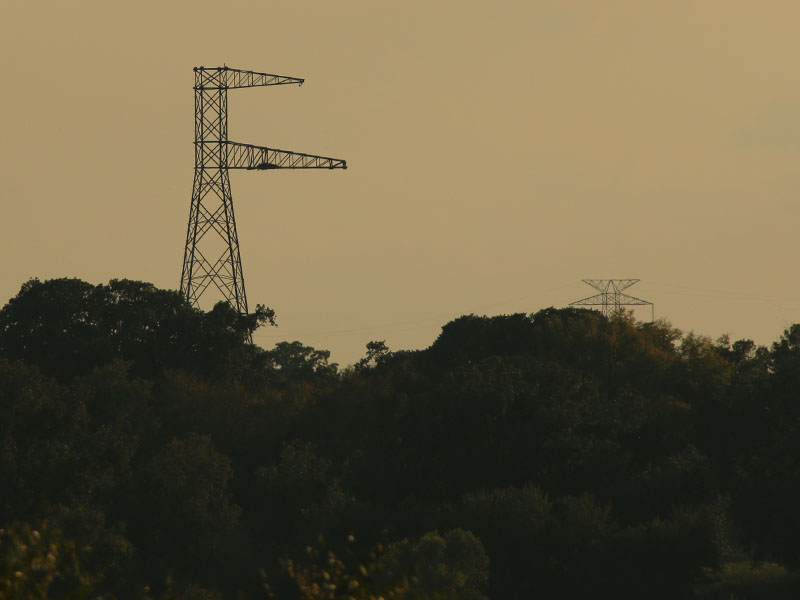
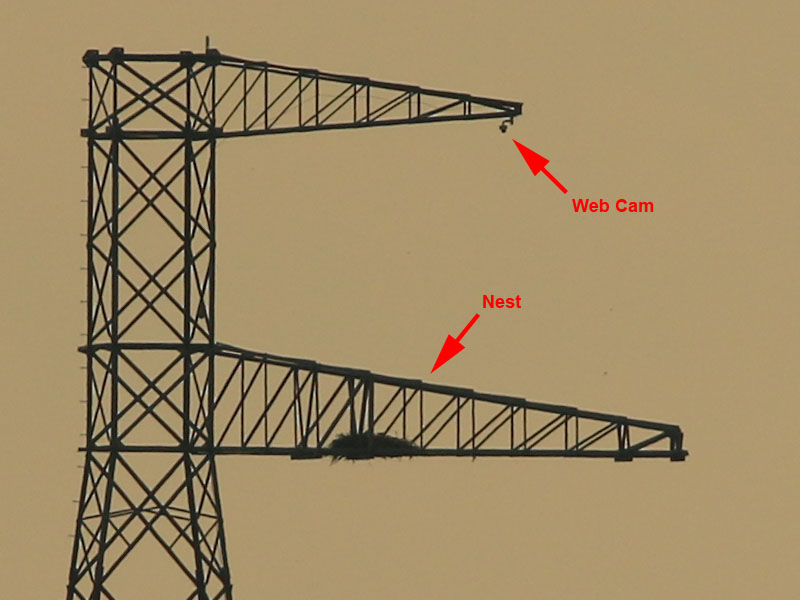
On this day, we first saw the eagles on our way in, some time before we actually arrived at the center. The pair of majestic birds were perched in a dead tree at the edge of the JBS property line, just short distance from the highway.
But as if on cue, the two eagles took to the sky as we passed by, and headed west along the road as though they were following us in. They soared over center on their way to the old transmission tower, where they perched together at the top, side by side. And there the two eagles stayed as the sun began to set.
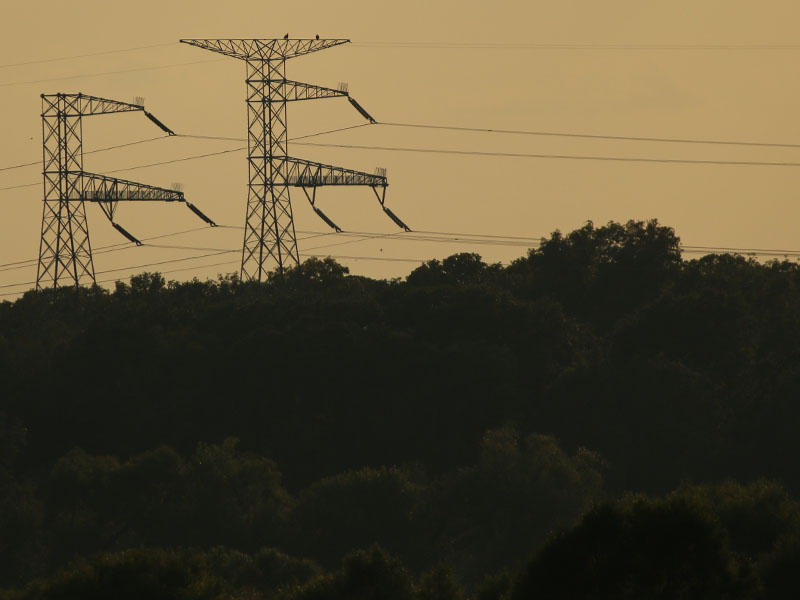
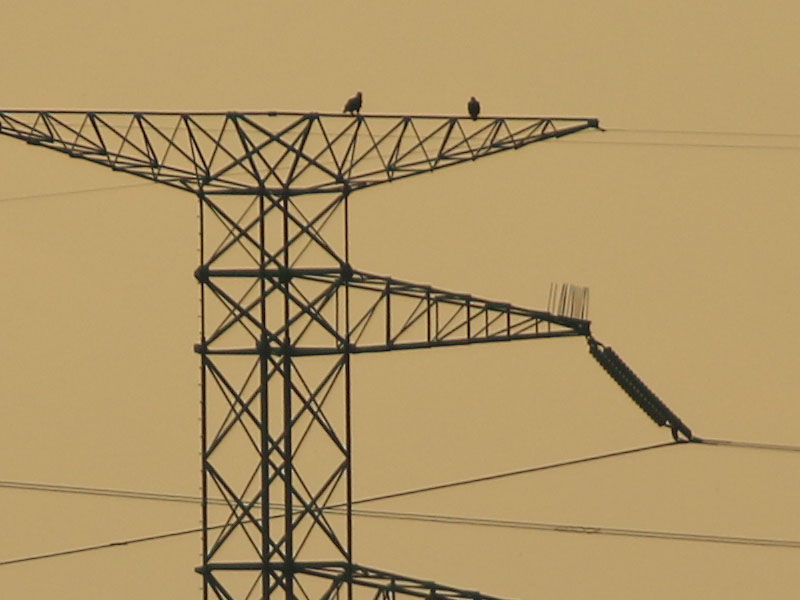
To help keep the eagles well away from the live high-voltage lines, the new tower was constructed over 1000 feet away from the old nesting site. The pictures below shows the two towers in context.
To further increase the appeal of the new nesting site, the new tower was constructed so that the nest would sit significantly higher than it had in the original location. Exclusion devices were also installed at the old nest site in order to discourage the eagles from attempting to rebuild there, hopefully offering additional incentive for them to move along.
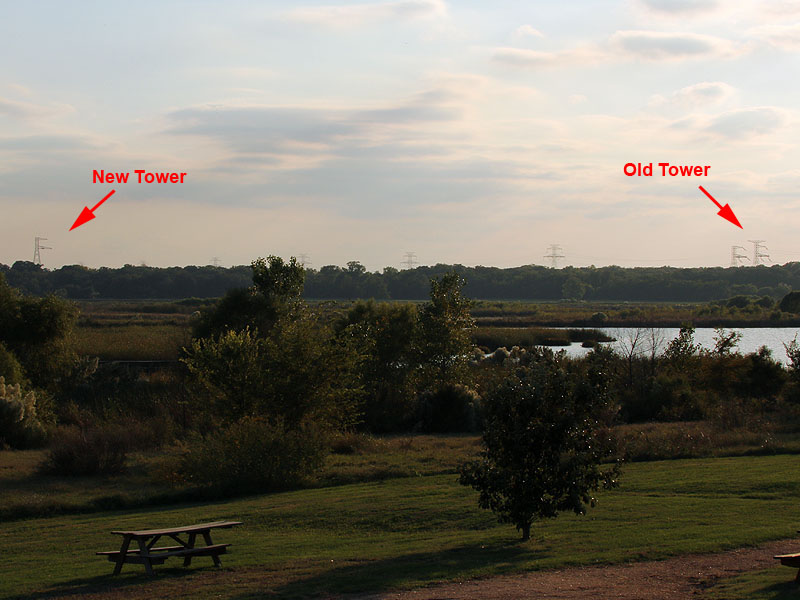
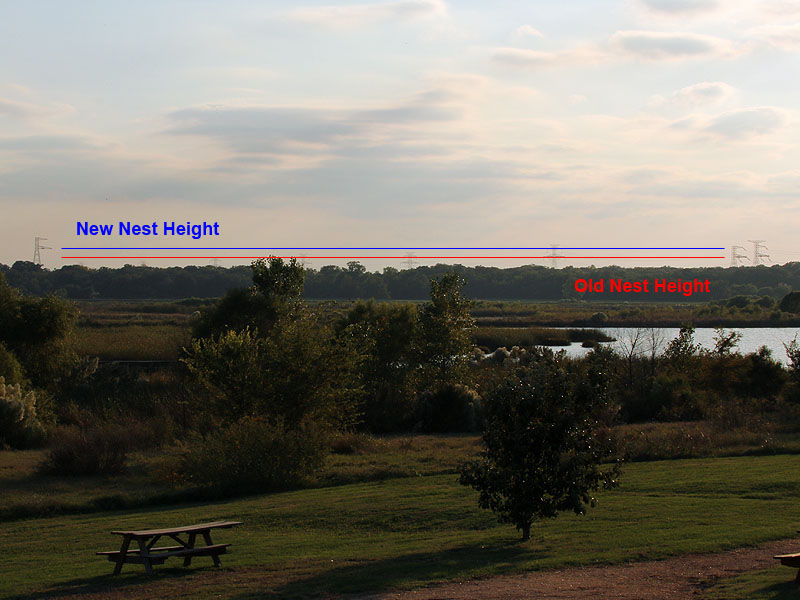
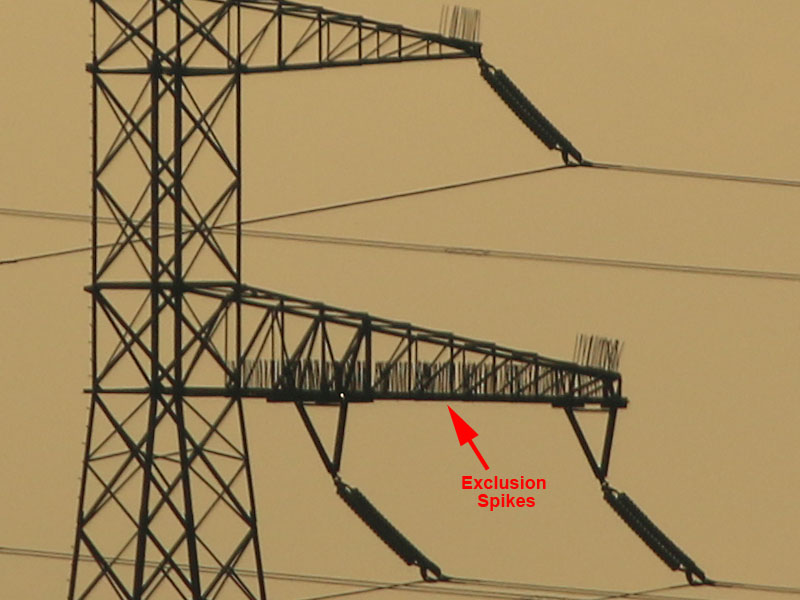
The activities of many other species of birds picked up as twilight began to settle over the wetland center. A large flock of juvenile White Ibises gave us a remarkable flyby. Several groups of graceful, white Great Egrets were seen following the bottomland woods along the river, heading north for the night. A couple of their brethren were observed feeding in the wetland cells close to where we were stationed.
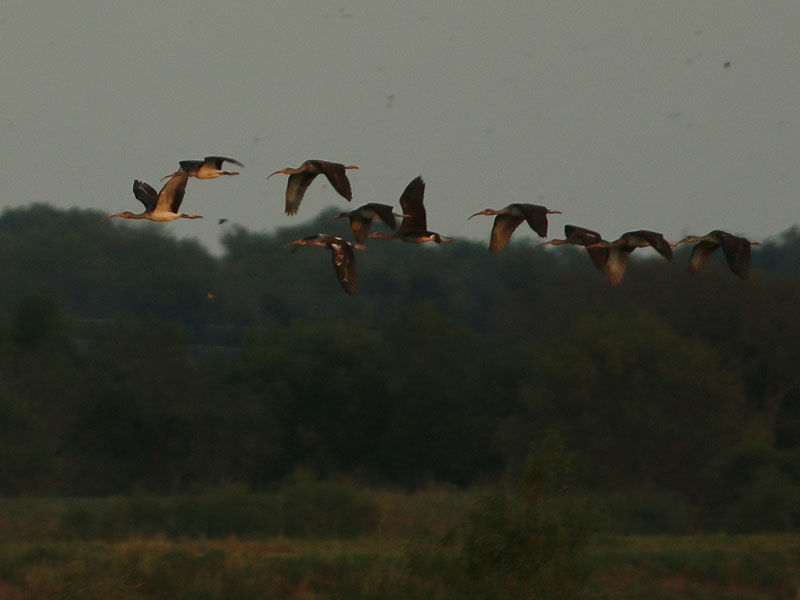

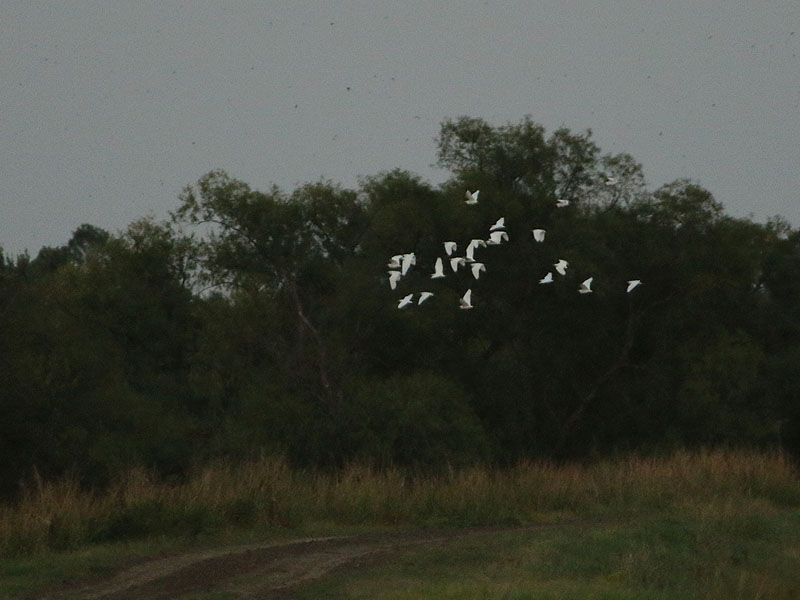
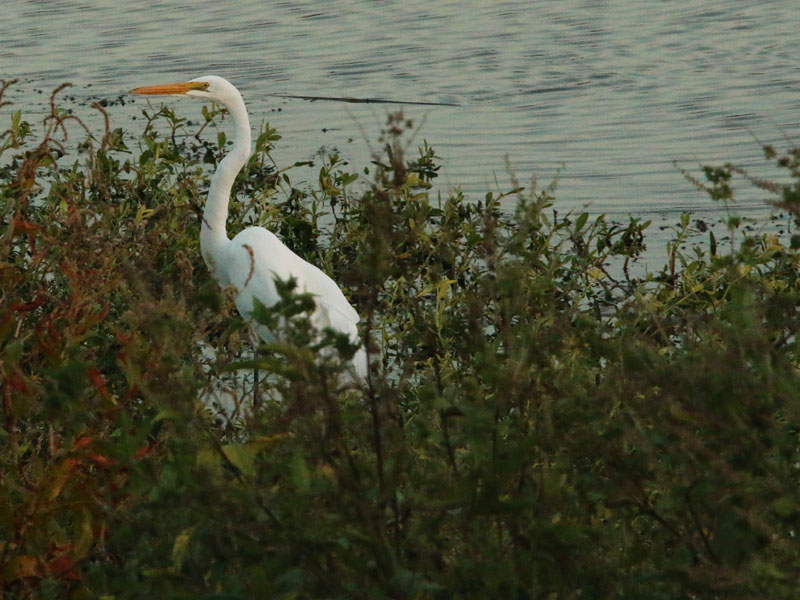
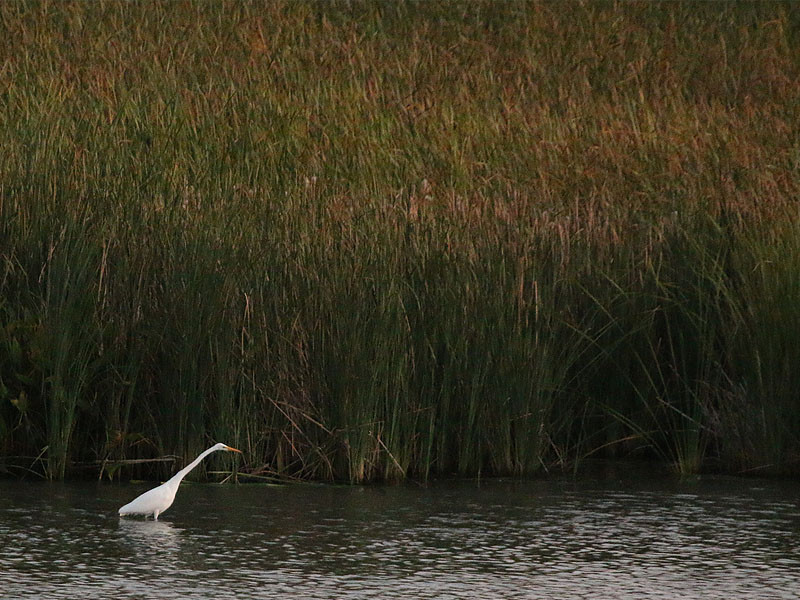
The sky began to take on a soft glow of warm pastel colors as the sun dropped lower the west—pink, orange, yellow, and blue. By the time a small flock of American White Pelican arrived at the center, the light from the setting sun had begun to reveal hundreds and thousands of Barn Swallows marshaling over the wetlands. The birds were there to make a feast of the many flying insects attracted to the marshy conditions. Afterwards the swallows would go to roost in the trees along the East Fork of the Trinity River to sleep off the night’s excesses.

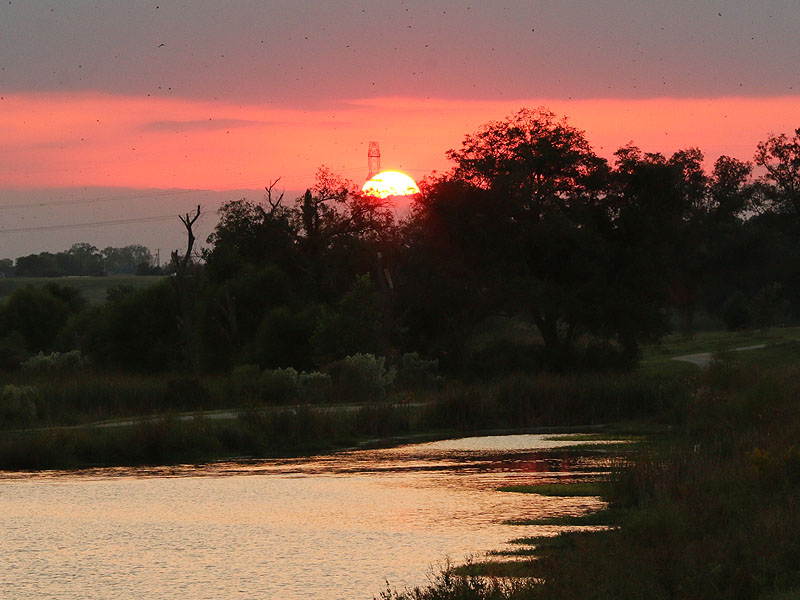
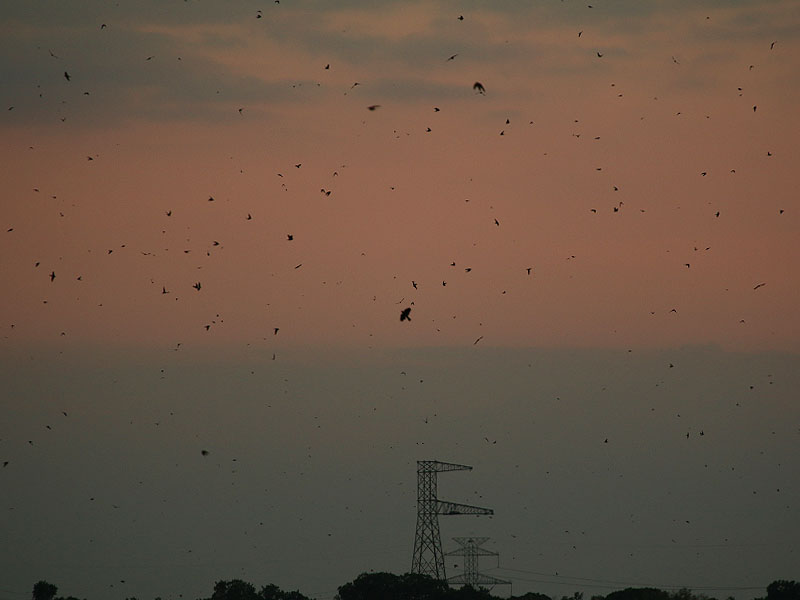
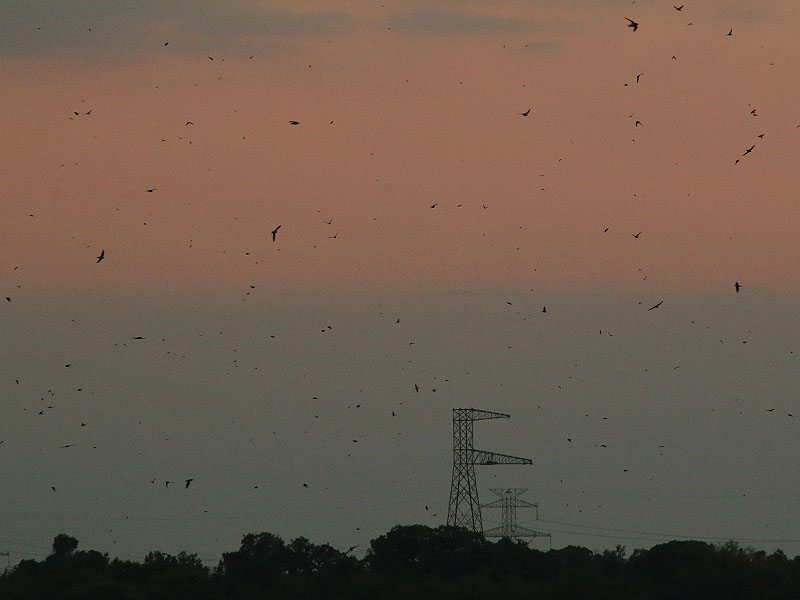

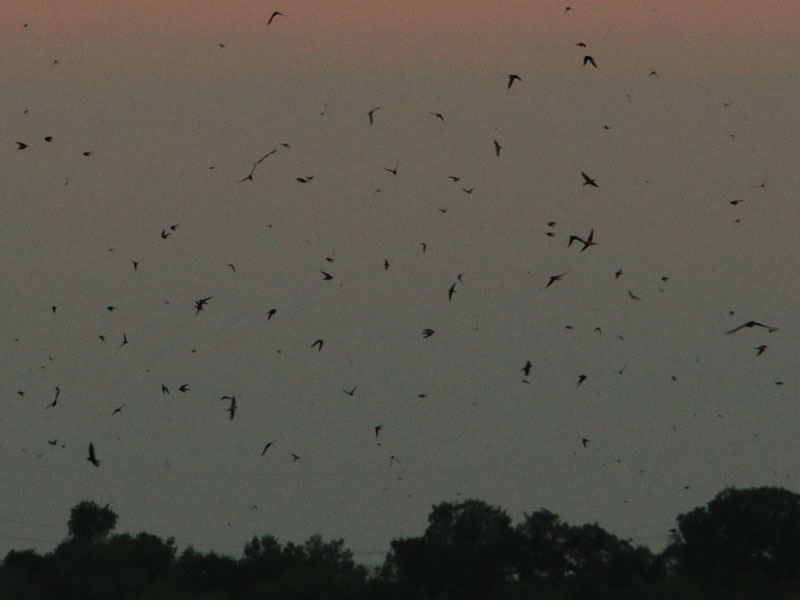
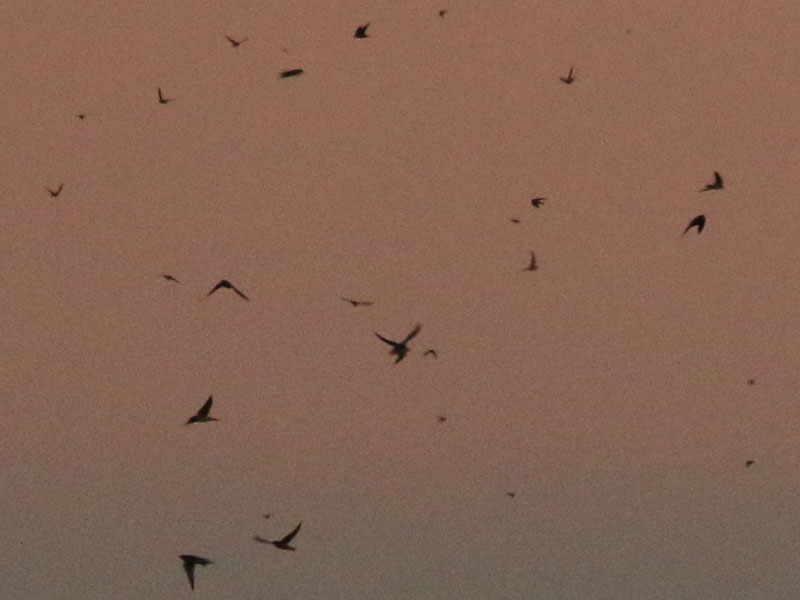
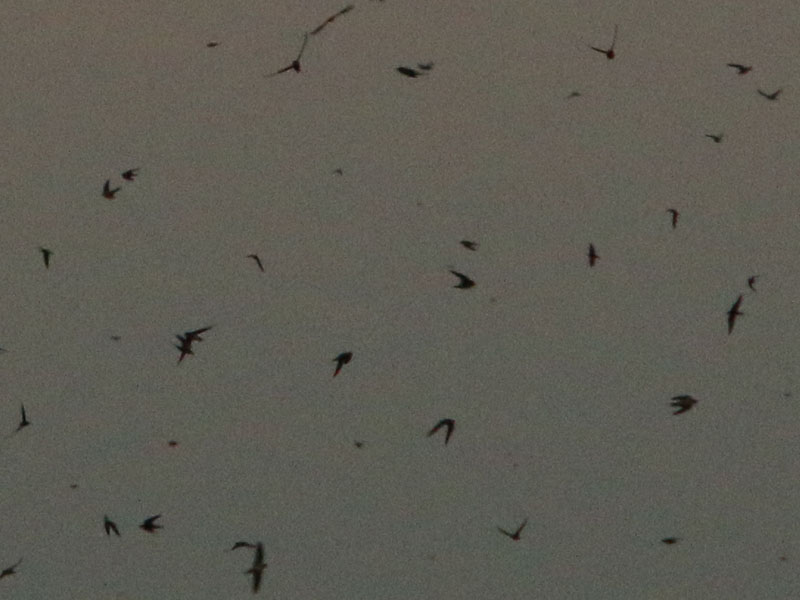
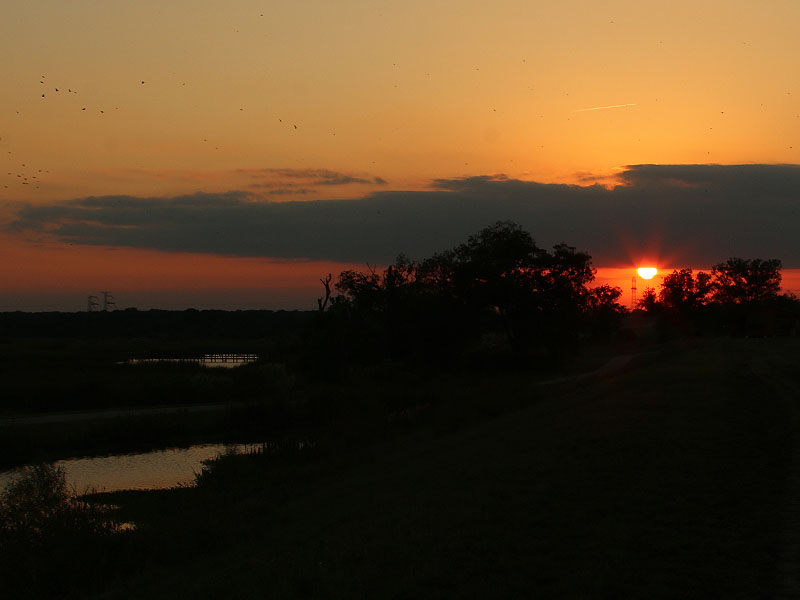
As the sun began to dip below the horizon, we turned our attention back to the eagles one last time. They were both still stationed atop the tower where they had nested successfully over the past two years. These two bird clearly have an affinity for this location—an attachment they are having a difficult time breaking.
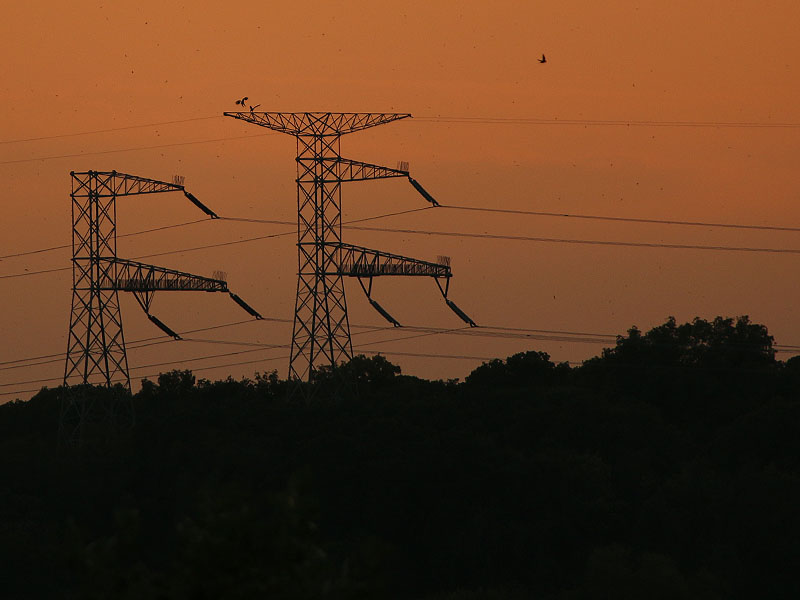

So, what about the eagles and the new nest? Are there any signs that the birds will accept and adopt the new location? As it turns out the answer is yes. Just this past week the eagles have begun showing exciting and encouraging signs that they are finding this new spot to their liking. They have been spending an increasing amount of time at new tower and have begun maintenance and modifications to the nest. On at least a couple of occasions the pair has spent the night together on the nest.
The eagles will spend the next couple of months engaging in courtship and nest preparation. Eggs will be laid sometime in mid-January and incubation will begin shortly afterwards. Until then, the amount of time the eagles will spend on the nest will be somewhat intermittent. After incubation has started, at least one eagle will be present on the nest at all times up until just before the young eaglets are ready to fledge in late spring. You can expect the eggs to hatch sometime in early March.
Below you will find a couple of screen grabs from the newly installed web cam. As you can see, this camera will give you all a much more intimate view of the eagles and their nesting activities than I was ever able to provide. You can see the live feed yourself by following this link: Live from John Bunker Eagles Nest Camera, or by clicking on either of the screen grabs below.

The odds of the eagles following the nest over to the new tower were estimated to be about about 50-50. Instead, it looks like what we have here is a 100% success. Nice work guys! Congratulations to everyone involved!
NOTE: The weather and overcast can affect the camera’s operation and take it temporarily offline. If there is no feed when you visit, try again a little later. You may have better luck on sunny days. The feed has been down for the last couple of days because of rainy weather, but it looks like it is back up as of this morning!


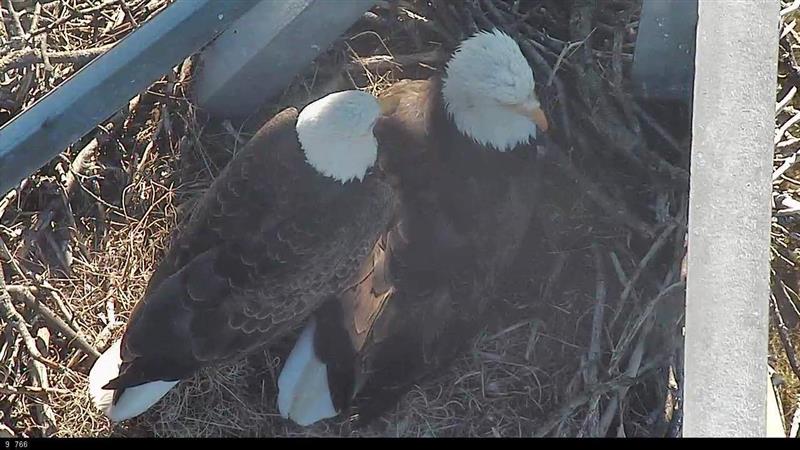

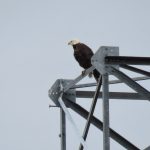
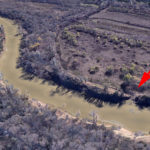


Saw this article on a website I watch the eagles on in MN. Did not know Dallas had Bald Eagles until I read their article & I HAVE LIVED HERE SINCE 1965! You should put a camera up there so we can watch them on the internet . I have been watching a nest in Decorah, IA since 2011. They have 3M viewers.
Kudos to all involved for moving their nest to a safe spot. I love love the eagles.
I’m excited too about having them right here. I have been watching the Eagles in Hays, PA and in the SE cam in Australia.
I think they may be having some technical difficulties with the Web Cam at JBS. I’m sure they will have it back online soon!
In scrolling on down & looking at the pictures, I see a cam. Is this cam on the internet? Where can I watch it?
Martha, you can see the live feed here: http://john-bunker-eagles-nest.click2stream.com/
So excited the eagles have found and are working on their old nest in the new location!
I visited the eagles at the original location and had many wonderful hours sitting in the middle of a field
observing other wildlife and listening to many beautiful bird songs while waiting for a glimpse of this pair. I admit to being a bit apprehensive about the move, but this pair seems to have taken it in stride.
Appreciate the care and expense by all involved in the original nest preservation and careful move.
I try to imagine how these eagles must have felt when they returned to the wetlands this year. What a Twilight Zone experience it must have been! The nest was gone without a trace, and somehow now the tower was too crowded with the exclusion spikes too allow them room to rebuild the nest in the original spot. Disbelief must have been their response. I’m sure the eagles were thinking, “This cannot be right, can it?” It must have been terribly disorienting. Then, what an odd experience it must have been for them when they finally discovered the nest located on a new tower that was not even there last year. I’m sure they were extremely suspicious. It probably took them some time to become comfortable enough to begin to investigate the new location. Days were probably required for them to become accepting of the new location, and in fact they are likely still be trying to reach an appropriate comfort level. But, the great thing about wildlife is how resilient it can be. Once the eggs are laid, the old tower will lose its appeal. Once the first brood fledges, the old tower will be forgotten!
Thank you so much for the wonderful article & photos!